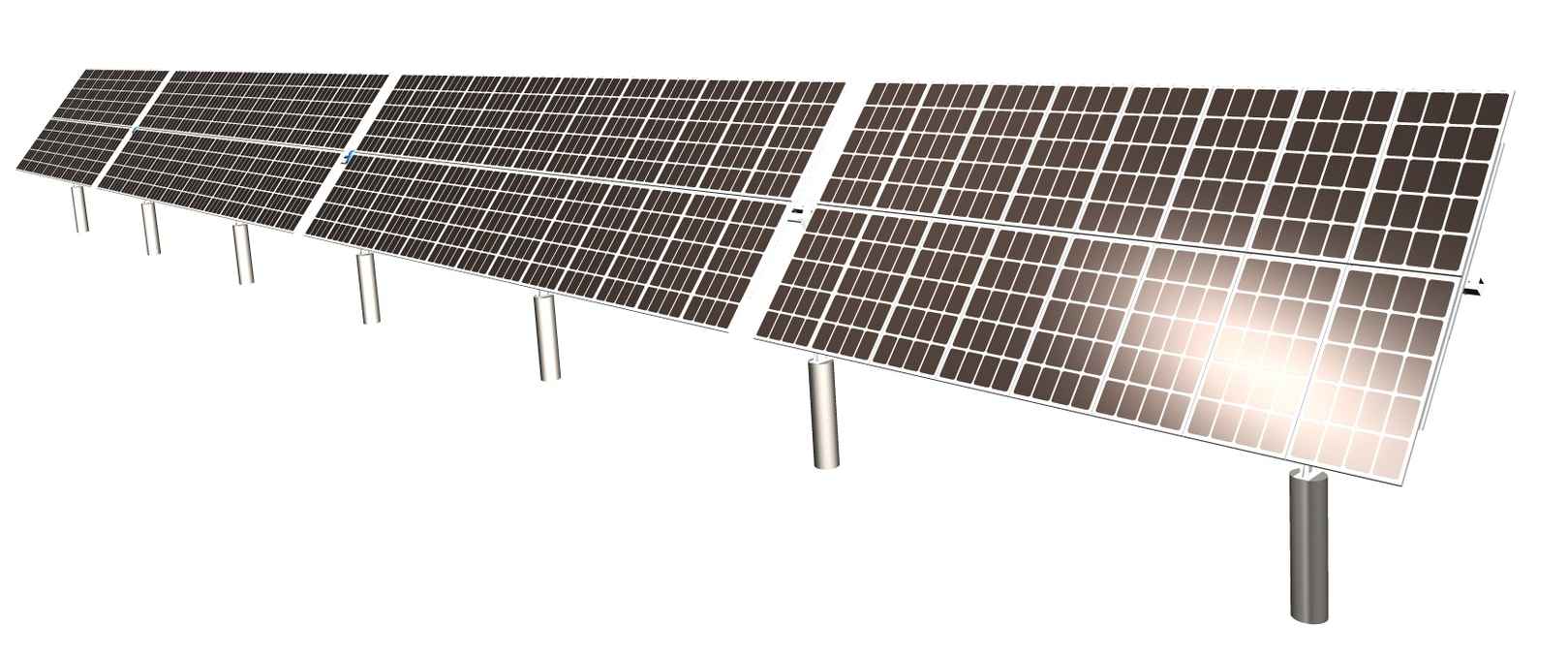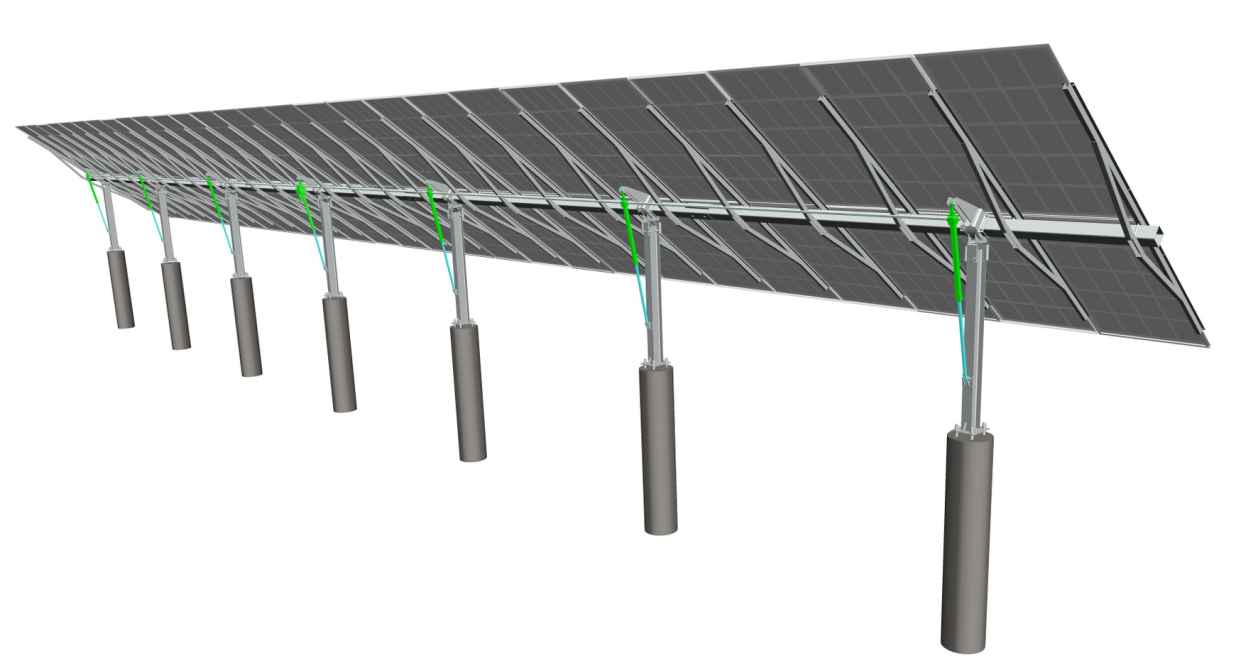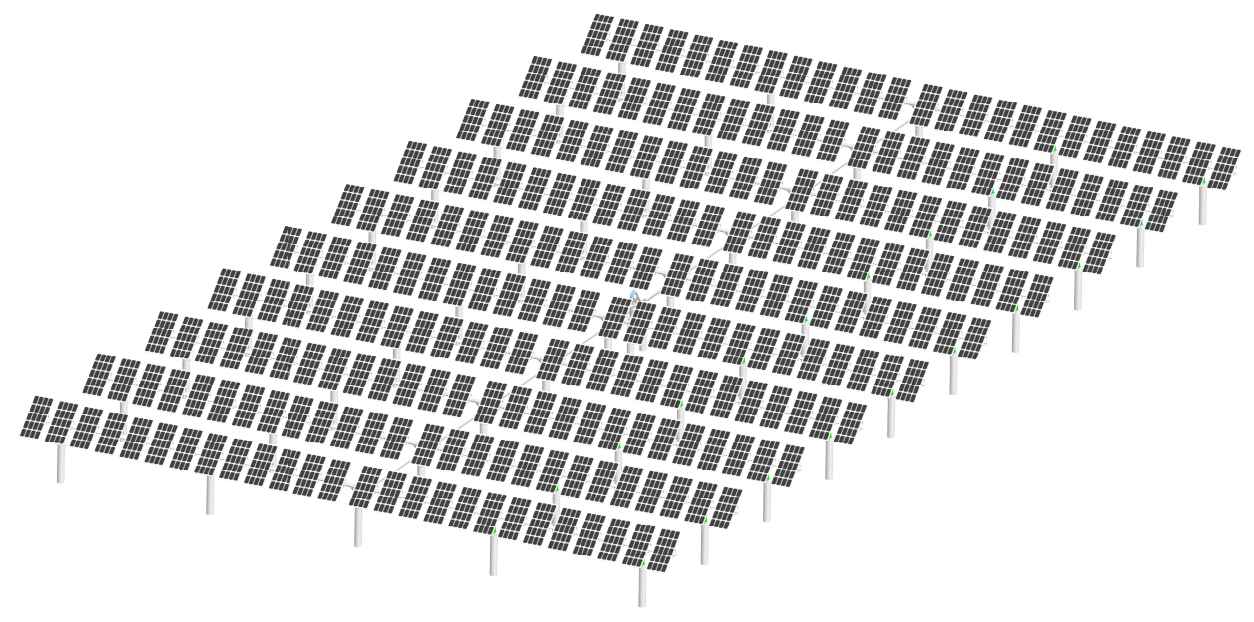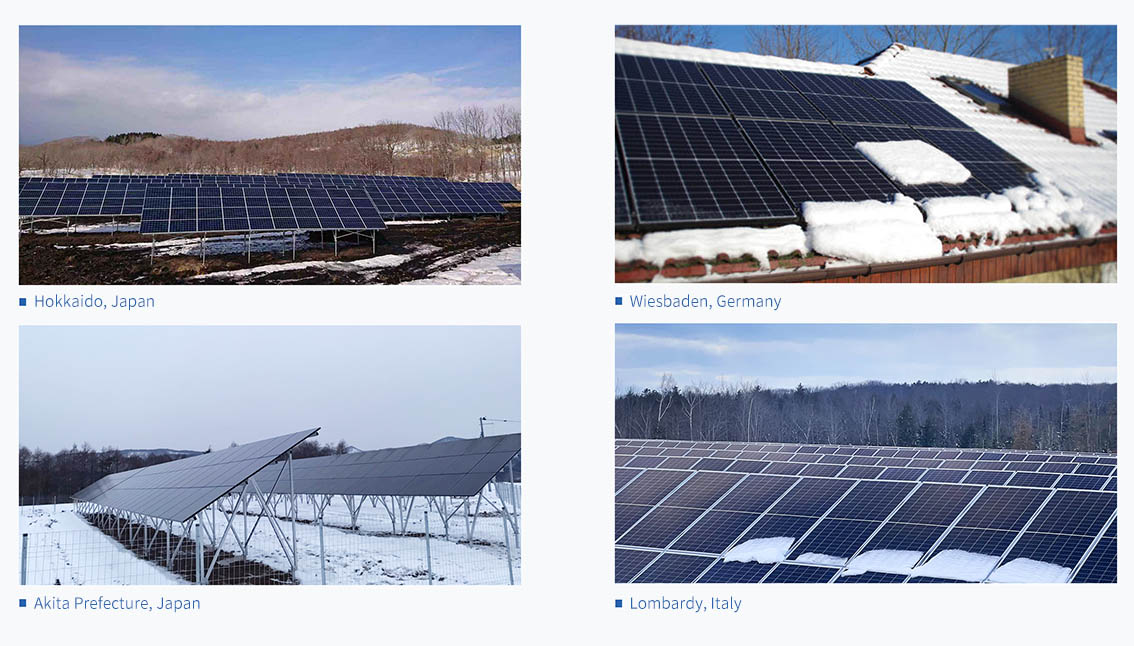In the solar power industry, photovoltaic (PV) mounts are crucial components that support the PV modules, directly affecting power generation efficiency and system safety. To enhance the load capacity and wind resistance of tracking mounts, ensuring stable operation even under harsh weather conditions, comprehensive optimization is needed across materials, structure, and design.
1.Use High-Strength Materials
Since PV power plants are exposed to outdoor environments for long periods, tracking mounts should be made from materials capable of withstanding substantial external forces. Commonly used low-alloy high-strength structural steel maintains its integrity under significant stress, providing a robust foundation for tracking mounts. Zn-Al-Mg coated steel, known for its excellent corrosion resistance self-repairing capability, effectively resists environmental damage over time, extending the lifespan of the tracking mounts. Additionally, lightweight yet strong aluminum alloy profiles can reduce the overall weight of the mount while ensuring sufficient load-bearing capacity

2.Use High-Strength Materials
Structural optimization is key to improving the wind resistance of tracking mounts. During the design process, increasing the cross-sectional dimensions of the main components can enhance stability and safety. Adding more connectors can make the assembly more secure. Where feasible, consider using welding or bolted connections for a more robust and durable structure, further increasing the stability and longevity of the tracking mount.

3.Intelligent Control
(1)Install Wind Speed Monitoring Devices: Real-time monitoring of wind speed and direction allows the system to automatically adjust the mount angle or flatten it when wind speeds reach a critical threshold, reducing wind load impact.
(2)Conduct Wind Tunnel Testing: Simulate various wind conditions to assess the structural performance of the solar tracking mount, aiding in design optimization to ensure safe power generation.
(3)Develop an Intelligent Adjustment System: Use anemometers and wind vanes for real-time wind condition monitoring, dynamically adjusting the mount angle to reduce frontal wind impact. Adaptive and predictive control algorithms can also be implemented to adjust the tracking mode based on changes in wind load.
These strategies significantly enhance the performance and safety of tracking mounts, providing strong support for the long-term, stable operation of PV power systems. With continuous technological progress and ongoing cost optimization, the smart and efficient development of tracking mounts is expected to advance further, unlocking broader prospects for the solar power industry.

Advantages of Huge Energy Solar PV Mounting Structures
Huge Energy solar PV mounting structures feature carefully selected materials, such as corrosion-resistant aluminum alloys, high-strength steel products and top-quality stainless steel bolt sets. Precision machining ensures durability in varied environments.
Before constructing a solar plant, we design a reliable PV mounting system and connection method tailored to the specific wind speeds and snow loads of the location. This enhances the structure’s ability to withstand crosswinds to ensure the overall stability. Our custom design service optimizes installation angles and minimizes shading losses, maximizing energy capture.
We offer 10-15 years of quality assurance and 25-years design life. Our “safety-first” engineering strategy has resulted in a decade of accident-free operations. Count on us for professional services from consultation through installation to ongoing maintenance.
We stand by our commitment to effective energy solutions and sustainable development. And we meet your expectations in every aspect and get your investment to the maximum return.
